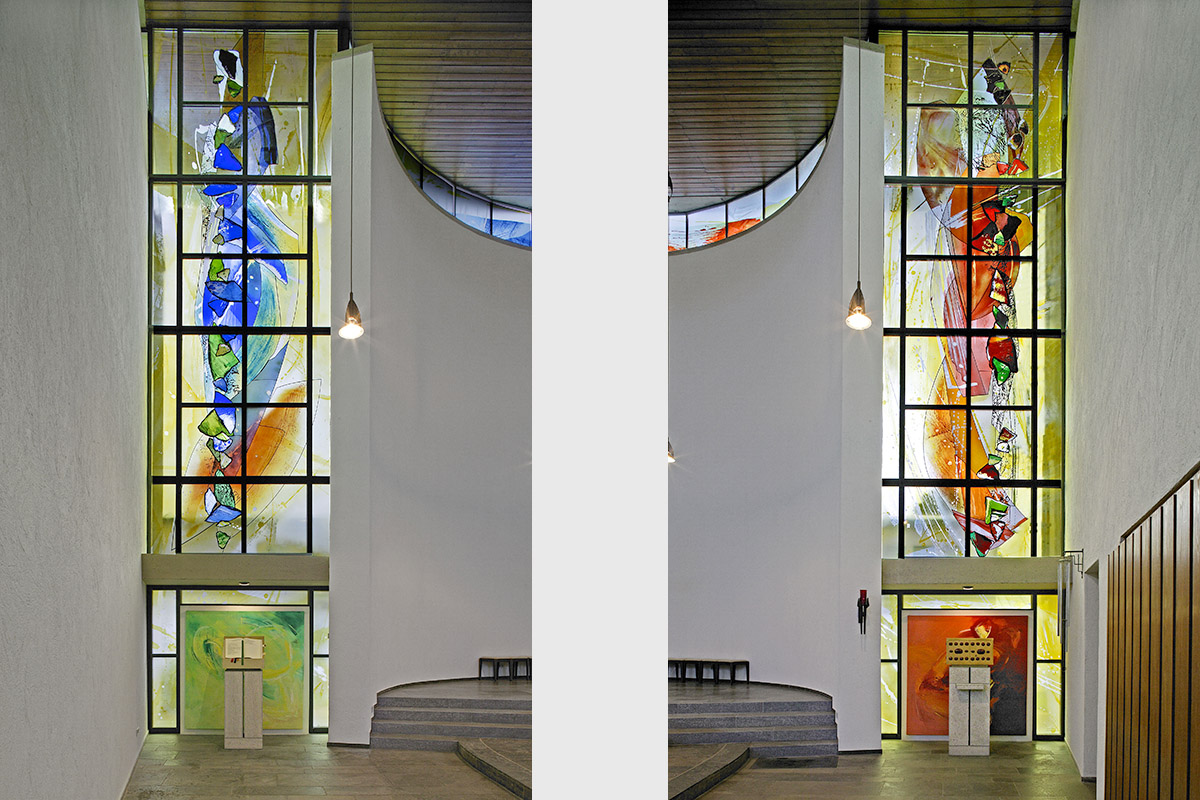Stained Glass Art by Graham Jones
Graham Jones has been a powerful influence as a glass artist for many years. Many artists relate that when they saw what Jones could achieve with glass artwork it opened their eyes to whole new vistas of potential.
During the 1980s and early 90’s he worked exclusively with leaded glass, but over the next decade more and more of this work was realised using enamelled colour, both transparent and opaque, on large panels of float glass.
As a stained-glass artist, Jones always had a very liberated approach to the medium, using the techniques of acid-etching and painting but always trying to create a loose, spontaneous and dynamic relationship with these craft-based skills – much more like Jackson Pollock than Mondrian.
Being a painter, and himself a superb craftsman in glass, Jones was at first sceptical about the capacity of screen-printed enamels on float glass to do any sort of justice to his vision. However, over time he realised he could use these techniques to convert the flat and inanimate surface of float glass into something alive and dynamic. The colours he was painting in, although printed, could capture the energy of his original brushstroke. Having always revelled in the texture and the uniqueness of each piece of genuine mouth-blown glass Jones found he could create texture in float glass. The major difference is that now he is more likely to be putting the resists for the acid on with a broom than with a small paintbrush. The scale may be different but the effect is the same.
As the images above show, Jones is primarily a painter who works in glass, converting his canvases into large expressionistic works of art. He is a wonderful colourist, actively seeking to create some form of dynamic tension in his works, otherwise, they will “lack any real life”. Now based in southwest England, he has made works for sites on almost every continent and in every imaginable context, particularly in synagogues and churches and Corporate Headquarters.
Most recently he completed a 520 sqm project for Hong Kong Airport. This used a mixture of airbrushed transparent enamels onto slumped glass, and a rear layer of digitally printed enamels to add myriad details to the overall compositions.














